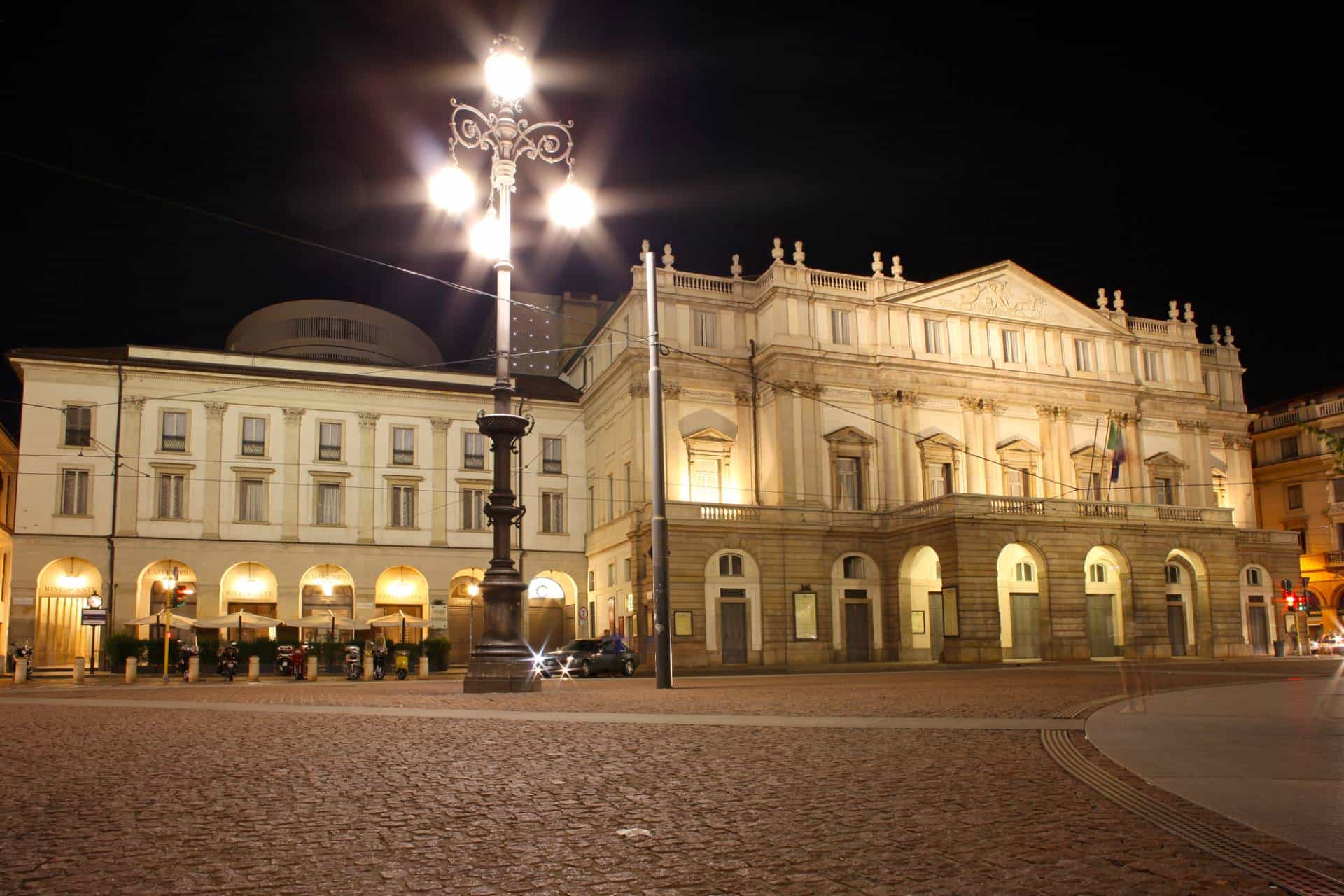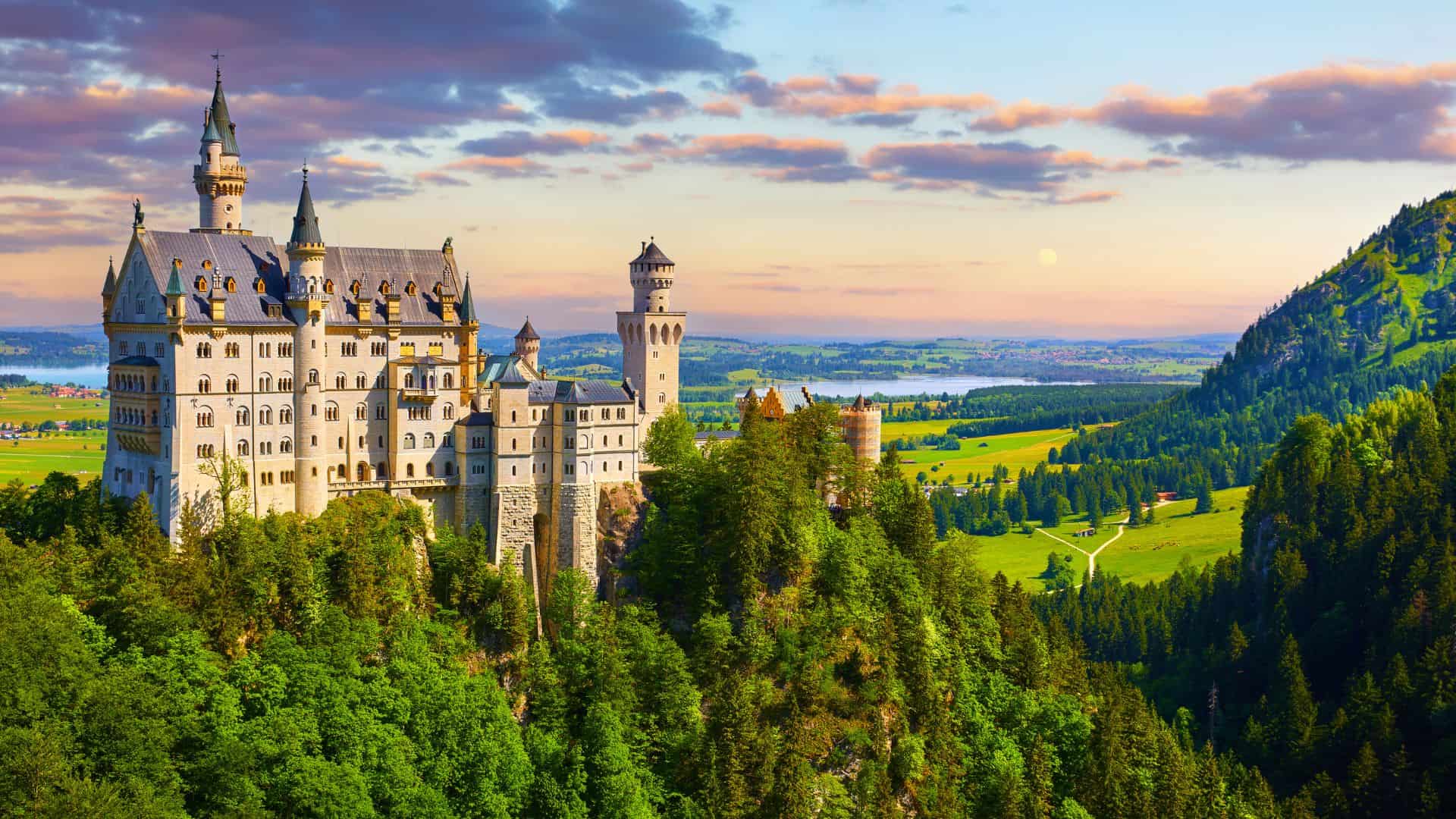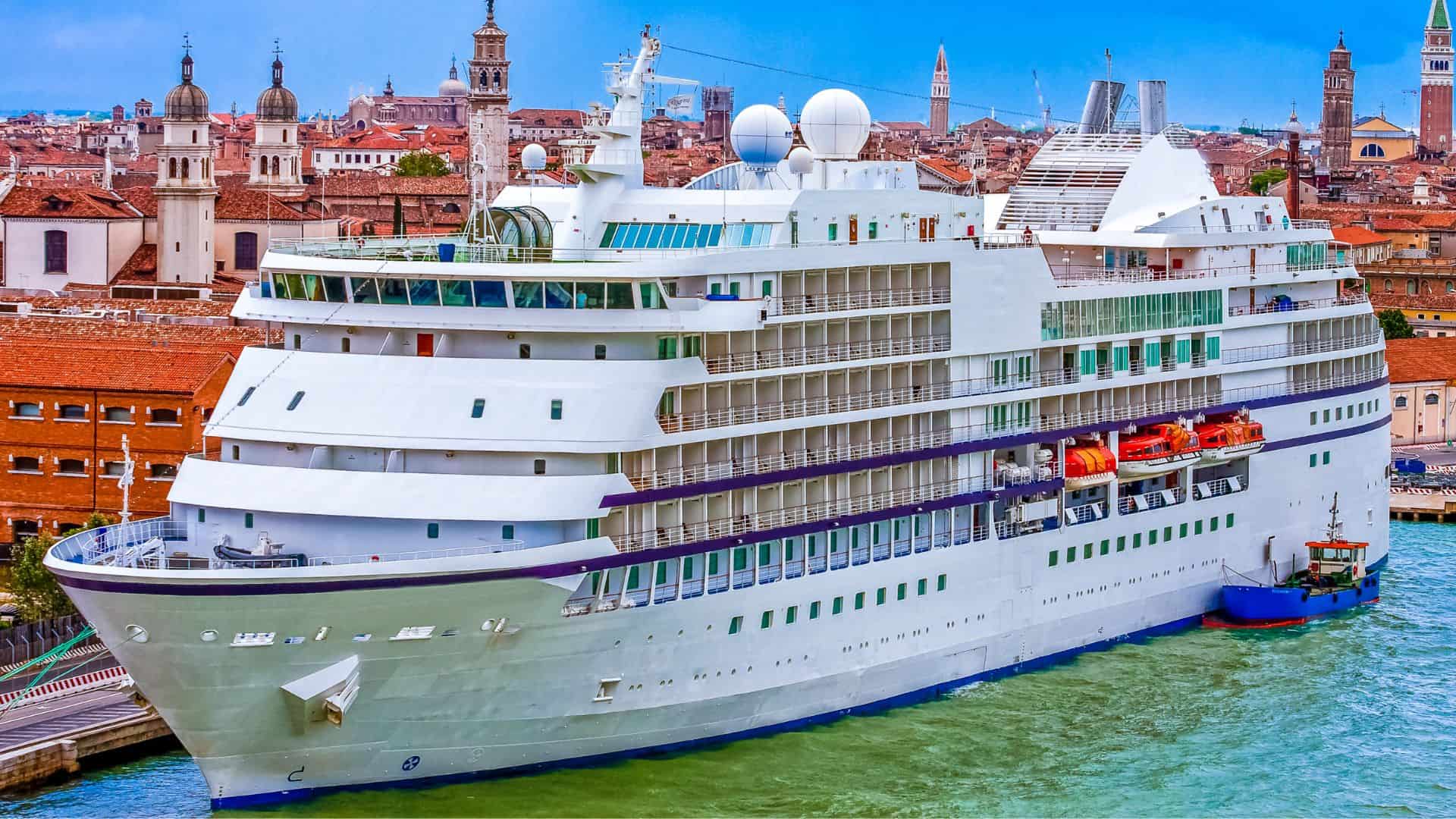
Italian Opera Houses: Milan, Naples, Venice, Verona
Unquestionably, the most notable opera house in the world is without a doubt the famed La Scala in Milan. Its contribution to the world of opera cannot be overstated. It would take several pages to list its many great premieres properly. The second listed, La Fenice in Venice, had been rebuilt after burning down on two occasions in 1836 and more recently in 1996. And while the Teatro San Carlo in Naples is considered the oldest opera house in Europe, at present, the Arena of Verona boasts being the biggest opera theatre in the world.
Italy is home to some of the most renowned opera houses in the world, each with a rich history of premiering and hosting performances of iconic operatic works. Here are a few of the famous Italian opera houses and notable premieres associated with them:
- La Scala (Teatro alla Scala) - Milan:
- La Scala, located in Milan, is one of the most prestigious opera houses globally. It has hosted numerous world premieres, including Giuseppe Verdi's "Nabucco" (1842) and "Otello" (1887), as well as Puccini's "Madama Butterfly" (1904).
- Teatro San Carlo - Naples:
- Teatro San Carlo in Naples is one of the oldest and most historic opera houses in the world. Notable premieres at San Carlo include Rossini's "Tancredi" (1813) and Donizetti's "Lucia di Lammermoor" (1835).
- Teatro La Fenice - Venice:
- La Fenice, meaning "The Phoenix," has a storied history, including premieres of major works like Verdi's "Ernani" (1844) and "Rigoletto" (1851). Sadly, the original theater was destroyed by fire in 1836 but was later rebuilt.
- Teatro Regio - Turin:
- The Teatro Regio in Turin has premiered significant operas, such as Verdi's "Macbeth" (1847) and Puccini's "La Bohème" (1896). It is renowned for its acoustics and elegant architecture.
- Teatro di San Carlo - Naples:
- Often referred to as the "Royal Theatre of Saint Charles," it is the oldest continuously active opera house in the world. Notable premieres include Rossini's "Elisabetta, regina d'Inghilterra" (1815) and Donizetti's "Belisario" (1836).
- Teatro Comunale - Florence:
- The Teatro Comunale in Florence has witnessed premieres of operas like Verdi's "La Traviata" (1853) and Puccini's "La Fanciulla del West" (1910).
- Teatro Massimo - Palermo:
- Teatro Massimo in Palermo, Sicily, is the largest opera house in Italy and has premiered significant works such as Verdi's "I vespri siciliani" (1855) and "Un ballo in maschera" (1859).
These opera houses not only hosted premieres but have also played a crucial role in the development and propagation of opera as an art form. They continue to be revered destinations for opera enthusiasts and are integral to Italy's rich cultural heritage.
Italy's profound connection to opera is encapsulated in its historic and visually stunning opera houses, which are not only cultural landmarks but also living testaments to the country's deep-rooted operatic traditions. Founded in 1737, the San Carlo Theater in Naples is celebrated as the oldest continuously active opera house in the world. This majestic venue, known affectionately as "the Phoenix" for its resilience and ability to rise from the ashes, stands as a beacon of Italy's rich operatic legacy.
In 1778, another jewel in Italy's operatic crown was inaugurated: the Teatro alla Scala in Milan. Often simply referred to as La Scala, this opera house is synonymous with high-quality opera and ballet performances, drawing both connoisseurs and novices to its ornate auditorium. The La Scala is renowned worldwide, not just for its grandeur but also for hosting premieres of works by giants like Giuseppe Verdi and Rossini, making it a pivotal location in the operatic world.
Verona's Arena di Verona, an enormous opera house that once served as a Roman amphitheater, offers a unique experience with its opera festival held under the starlit sky. The combination of ancient architecture and live operatic performances creates an unforgettable atmosphere, solidifying the Arena di Verona's place among the top opera venues globally.
Florence's Teatro del Maggio Musicale Fiorentino, although not as old as some of its counterparts, holds its own with a rich history of premiering important operatic works. Its modern counterpart in the city, inaugurated in the 21st century, continues this tradition, marrying historical significance with contemporary operatic expressions.
The city of Parma, closely associated with Giuseppe Verdi, boasts the Teatro Regio di Parma, a hub for Verdi enthusiasts. The opera house is famed for its Verdi Festival, an operatic homage to the composer, making it a must-visit for fans of his work.
In Venice, the Teatro La Fenice, aptly named "The Phoenix," has twice been rebuilt after devastating fires, embodying the spirit of rebirth and resilience. Known for its world-class opera performances, La Fenice remains one of Italy's most cherished cultural institutions.
Bologna’s Teatro Comunale, opened in 1740, stands as one of Italy’s historic opera houses, offering a blend of traditional and contemporary operatic works. Its beautiful interior and rich programming make it a pivotal point in Italy’s operatic scene.
Turin’s Teatro Regio, renowned for its innovative productions, combines historical depth with modern interpretations, attracting opera lovers from around the world. Its pivotal role in promoting operatic art makes it a cornerstone of cultural life in Turin.
Palermo’s Teatro Massimo, the largest opera house in Italy, is an architectural marvel known for its grand scale and artistic excellence. Its productions span the breadth of operatic repertoire, from classic to contemporary works, making it a beacon of operatic art in southern Italy.
Lastly, the Teatro di San Carlo in Naples not only prides itself on being the oldest active opera venue but also continues to be a leading opera house, showcasing the best of Italian and international opera talent. Its historical significance and continuous contribution to the opera world underscore Italy's unbreakable bond with this exquisite art form.
Italy’s opera houses, from the historic San Carlo Theater to the grand Arena di Verona, serve as the heart and soul of the operatic world, offering unparalleled experiences to audiences and performers alike. These venues, steeped in history and cultural significance, stand as monuments to Italy’s enduring love affair with opera, making them essential destinations for anyone wishing to immerse themselves in the rich tapestry of Italian culture and operatic excellence.
Italy's illustrious opera houses are not just venues for performances; they are sanctuaries of music where the spirits of great composers like Puccini and the voices of legendary singers like Luciano Pavarotti resonate within their walls. These temples of operatic art, nestled in the heart of historic cities and piazzas, boast some of the best acoustics in the world, making them coveted stages for both performers and opera lovers alike.
The La Fenice Theatre in Venice, with a history as dramatic as the operas it hosts, first opened its doors in the late 18th century. Famous for premiering many of Puccini's operas, such as "Madame Butterfly" and "La Tosca," La Fenice has risen from the ashes of fires almost as if mimicking the phoenix it's named after. Its excellent acoustics and intimate setting provide a unique experience, making it a favorite among both performers and audiences.
In the grand piazza of Milan sits the iconic La Scala, an opera house that is synonymous with Italian culture and operatic excellence. Known for its rich history and as a platform that launched the careers of numerous opera singers, La Scala's season is eagerly anticipated by music lovers worldwide. The theatre, built on the former location of the church of Santa Maria alla Scala, boasts acoustics that are revered, making it one of the best places to experience opera.
Moving to the heart of Tuscany, the Puccini Festival in Torre del Lago celebrates the work of Giacomo Puccini, where opera fans gather to enjoy performances of his most famous operas in an open-air theatre by the lake. This festival epitomizes the Italian love for opera, combining breathtaking settings with unforgettable music.
The Teatro Regio in Turin, renowned for its traditional Italian architecture and state-of-the-art stage technology, offers opera enthusiasts a blend of classical and contemporary performances. Its season features works by Verdi, Puccini, and other stalwarts, celebrated for their excellent acoustics and the immersive experience they provide.
In Naples, the Teatro di San Carlo stands as a testament to the enduring legacy of Italian opera. As one of the oldest and largest opera houses in Europe, its majestic interior and unparalleled acoustics have made it a beacon for opera aficionados. The theatre's season is a vibrant mix of classic operas and ballets, showcasing the richness of Italian operatic tradition.
La Scala in Milan, not only a UNESCO World Heritage site but also an emblem of Milanese cultural identity, has nearly burned down twice in its history. Yet, it continues to be a patron saint of the operatic arts, drawing crowds from around the globe. Its reputation for launching the careers of opera's most illustrious figures, alongside its commitment to showcasing new talent, keeps it at the forefront of the operatic world.
Lastly, the Teatro Massimo in Palermo, known as La, is a jewel in the crown of Sicilian culture. Its majestic design and superb acoustics make it a cherished venue for both performers and opera enthusiasts. The theatre's diverse season, which often includes lesser-known works alongside the classics, offers something for every opera lover, further cementing Italy's status as the home of opera.
Italy's opera houses, from the hallowed halls of La Fenice to the grandeur of La Scala, continue to be pivotal stages for the world's most acclaimed operas. These venues, celebrated for their excellent acoustics, rich histories, and contributions to the arts, remain the best Italian opera houses, offering unforgettable experiences to those fortunate enough to visit.
For anyone planning a trip to Italy with a love for the performing arts, exploring the best opera houses in Italy is an essential experience. From the first opera performances that echoed through the halls of these historic venues to the modern interpretations that continue today, Italy's famous opera houses are a testament to the enduring legacy of opera in Italy. Whether it's the grandeur of La Scala in Milan or the historic charm of La Fenice in Venice, each opera house offers a unique window into the rich cultural tapestry of Italy. As you travel throughout Italy, the opportunity to visit these iconic venues and witness a live performance is not just a chance to see opera but to experience a vital part of Italian heritage and artistic expression.










